Keywords
|
| PV array, RES, Power Quality, Voltage Control |
INTRODUCTION
|
| In Electrical Power distribution networks, it is essential to balance the supply and demand of active and reactive power in an electric power system. If the balance is lost, the system frequency and voltage excursion may occur resulting, in the worst case, in the collapse of the power system. Appropriate voltage and reactive power control is one of the most important factors for stable power system. The distribution system losses and various power quality problems are increasing due to reactive power [1]. |
| Nowadays electrical power transmission and distribution system face increasing demand for more power, better quality with higher reliability at a lower cost as well as low environmental impact. Present developing countries applying versatile voltage regulation and system stabilization measure, in order to utilize more effectively the latent capacity in existing transmission networks in preference to committing larger resources to new overhead lines and substations. |
| The voltage regulation is also poor in the distribution system due to the unplanned expansion and the installation of different types of loads in the existing distribution system [2,3]. |
| Several large industrial users are reported to have experienced large financial losses as a result of even minor lapses in the quality of electricity supply. As the number of power electronics equipment increase in power systems, the quality of electric power supply is spoiled [4]. Both high power industrial loads and domestic loads are the source of unbalanced currents and current harmonics distortions in electric power supplies. |
| unbalanced currents and current harmonics distortions in electric power supplies. One of the most common power quality problems today is voltage dips. A voltage dip is a short time (10 ms to 1 minute) event during which a reduction in r.m.s voltage magnitude occurs [5]. It is often set only by two parameters, depth/magnitude and duration. The voltage dip magnitude is ranged from 10% to 90% of nominal voltage (which corresponds to 90% to 10% remaining voltage) and with a duration from half a cycle to 1 min. In a three-phase system a voltage dip is by nature a three-phase phenomenon, which affects both the phase-to-ground and phase-to-phase voltages [6]. |
| A voltage dip is caused by a fault in the utility system, a fault within the customer’s facility or a large increase of the load current, like starting a motor or transformer energizing. Typical faults are single-phase or multiple-phase short circuits, which leads to high currents. The high current results in a voltage drop over the network impedance. At the fault location the voltage in the faulted phases drops close to zero, whereas in the non-faulted phases it remains more or less unchanged [7]. |
PROPOSED SYSTEM DESCRIPTION
|
| The proposed system consists of RES connected to the dc-link of a grid-interfacing inverter. The voltage source inverter is a key element of a DG system as it interfaces the renewable energy source to the grid and delivers the generated power. The RES may be a DC source or an AC source with rectifier coupled to dc-link. Usually, the fuel cell and photovoltaic energy sources generate power at variable low dc voltage, while the variable speed wind turbines generate power at variable ac voltage. Thus, the power generated from these renewable sources needs power conditioning (i.e., dc/dc or ac/dc) before connecting on dc-link. The dc-capacitor decouples the RES from grid and also allows independent control of converters on either side of dc-link is as shown in the Fig.1. |
Solar Panel
|
| The term solar panel is best applied to a flat solar thermal collector, such as a solar hot water or air panel used to heat water, air, or otherwise collect solar thermal energy. But 'solar panel' may also refer to a photovoltaic module which is an assembly of solar cells used to generate electricity. The schematic arrangement is as shown in the Fig.2. |
| An array is an assembly of solar-thermal panels or photovoltaic (PV) modules; the panels can be connected either in parallel or series depending upon the design objective. Solar panels typically find use in residential, commercial, institutional, and light industrial applications. |
| Recently there has been a surge toward large scale production of PV modules. In parts of the world with significantly high insulation levels, PV output and their economics are enhanced. PV modules are the primary component of most small-scale solar-electric power generating facilities. Larger facilities, such as solar power plants typically contain an array of reflectors (concentrators), a receiver, and a thermodynamic power cycle, and thus use solar-thermal rather than PV. The PV cells are made of semiconductor materials, such as silicon. For solar cells, a thin semiconductor wafer is specially treated to form an electric field, positive on one side and negative on the other. When light energy strikes the solar cell, electrons are knocked loose from the atoms in the semiconductor material. If electrical conductors are attached to the positive and negative sides, forming an electrical circuit, the electrons can be captured in the form of an electric current - that is, electricity. This electricity can then be used to power a load. A PV cell can either be circular or square in construction. |
| The efficiency of a PV cell is defined as the ratio of peak power to input solar power. |
 ............(1) ............(1) |
| where, Vmp is the voltage at peak power, Imp is the current at peak power, I is the solar intensity per square metre, A is the area on which solar radiation fall. |
| The efficiency will be maximum if we track the maximum power from the PV system at different environmental condition such as solar irradiance and temperature by using different methods for maximum power point tracking. |
Dc-Link Voltage and Power Control Operation
|
| Due to the intermittent nature of RES, the generated power is of variable nature. The dc-link plays an important role in transferring this variable power from renewable energy source to the grid. RES are represented as current sources connected to the dc-link of a grid-interfacing inverter. Fig.3 shows the systematic representation of power transfer from the renewable energy resources to the grid via the dc-link. The current injected by renewable into dc-link at voltage level Vdc can be given as |
 |
| Where PRES is the power generated from RES. |
| The current flow on the other side of dc-link can be represented as, |
 |
| The fourth leg of inverter is used to compensate the neutral current of load. The main aim of proposed approach is to regulate the power at PCC during 1. PRES=0, 2. PL<total load power (PL), 3.P>PL While performing the power management operation, the inverter is actively controlled in such a way that it always draws/ supplies fundamental active power from to the grid. If the load connected to the PCC is non-linear or unbalanced or the combination of both, the given control approach also compensates the harmonics, unbalance, and neutral current. |
| Simulation has become a very powerful tool on the industry application as well as in academics, nowadays. It is now essential for an electrical engineer to understand the concept of simulation and learn its use in various applications. Simulation is one of the best ways to study the system or circuit behavior without damaging it .The tools for doing the simulation in various fields are available in the market for engineering professionals. Without simulation it is quiet impossible to proceed further. It should be noted that in power electronics, computer simulation. The objective of this chapter is to describe simulation of impedance source inverter with R, R-L and RLE loads using MATLAB tool. |
SIMULINK FOR THREE PHASE CLOSED LOOP CONTROL
|
| We can visualize the simulation behavior by viewing signals with the displays and a scope provided in Simulink is as shown in the Fig.4. We can also view simulation data within the Simulation Data Inspector, where we can compare multiple signals from different simulation runs. Scope is the block in Simulink by which we can measure and view the voltage, current, and power in electrical domain. |
| In this model 3-ph 4-wire system is applied in which fourth wire is act as neutral. If there any fault occurs in any of the phases neutral will act as that phase for continuous power transmission. The given input is 440V which is step up for 11kV and it will step down at the load side. |
| The Fig. 5 represents the input voltage rating of 11kV.By using step up Transformer input voltage 440V is stepped up to 11KV . Initially 440 V is stepped up in the transmission line using transformer and 11 KV to minimize the transmission losses. |
| This loop is designed for measuring the voltage and current rating and values are compared with reference value for pulse production. The loop controller and various power flows output is as shown in the Fig.6 and Fig.7 respectively. |
| This curve shows the variations in real and reactive power during the time period between 0 and 1. |
| This model is designed for pulse generation which is given to operate Switches ON and OFF during the time period produced by the crystal oscillator. The pulse was generated using reference value calculated. The inner loop control circuit is as shown in the Fig.8. |
| This curve shows that the pulse is generated after some time delay and the pulses are in square wave form produced from the Inverter circuit is as shown in the Fig.9. |
| This curve shows the voltage rating after stepping down is done. The solar input is given for boost up the voltage rating in transmission line if there any voltage drop or fault occurred. |
| Due to the presence of power electronic component the output waveform is not pure sinusoidal instead the output is in square waveform because of the harmonic content present in the system is as shown in the Fig.10. |
| The reduction in the harmonic content will improve the performance. The total harmonic distortion of a system is determined by performing the FFT analysis which gives the THD value of the output waveforms in the system. |
| In the Fig.11 the FFT analysis is done for the ouput voltage waveform . The THD value is 0.07%. The main advantage of this method after compensation produces the result of lower THD rating. It will improves the system performances. If ther is any voltage drop during transmission the solar energy we are injecting will compensate the voltage drop at the distribution level. |
HARDWARE MODEL OF PV SYSTEM
|
| Pulses from the microcontroller have given to the driver circuit for amplifying 5V to 12V pulses. The buffer CD4050 is used for the impedance matching. The optocoupler MCT2E is used for optical isolation. From the optocoupler transistor get the signal, this signal has amplified by using the totem pole configuration. This amplified signal has given across the terminals of gate & source of MOSFET. To ON the transistors, the power supply has given. |
| The crystal oscillator generates the 5v clock pulse which is required for triggering the switches of the inverter circuit. The clock pulses are generated by the crystal oscillator on the pre-programmed interval given by the programmed PIC microcontroller. The output of the 5v clock pulse is always taken from the port C of the PIC microcontroller. The 5v pulse is not sufficient for triggering the switches and thus the pulses generated by the crystal oscillator are amplified to 12v pulse by using the driver unit. Fig.12 and 13 shows the Hardware model and Clock pulse generated by the crystal oscillator respectively. |
| The output voltage waveform in the absence of the compensating device is shown in the Fig.14. The magnitude of the voltage waveform has been reduced due to the losses occurring in the transmission line. The magnitude of the voltage reduces and thus the load will not get the sufficient voltage magnitude for its efficient operation which results in the shutting down of loads due to voltage distortions and it also causes damage to sensitive loads. |
| In the Fig.15 illustrated above shows the output voltage waveform after performing the compensation. The Circuit has been designed to inject the voltage depending upon the drop in the voltage level. Thus, the voltage level has been improved by injecting Renewable Energy (solar) and the devices can operate without any voltage drop and the sensitive loads can be protected from damage. The magnitude of the output voltage waveform has been increased to 12- 15V. |
CONCLUSION
|
| This paper has presented a novel control of an existing grid interfacing inverter to improve the quality of power at PCC for a 3-phase 4-wireDGsystem. It has been shown that the grid- interfacing inverter can be effectively utilized for power conditioning without affecting its normal operation of real power transfer. The grid-interfacing inverter with the proposed approach can be utilized to inject real power generated from RES to the grid and operate as a shunt Active Power Filter (APF). This approach thus eliminates the need for additional power conditioning equipment to improve the quality of power at PCC. This paper has provided a brief summary of solar PV systems and power quality issues in grid connected power system. This paper has also presents a summary of converts and inverters in solar power system and its power quality issues. The hardware results coincide with the simulation results. |
Figures at a glance
|
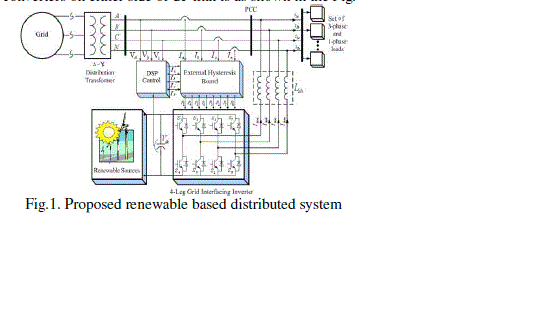 |
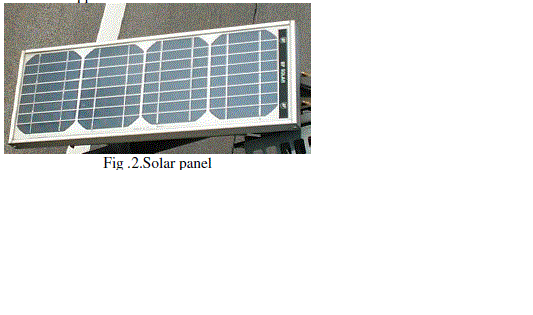 |
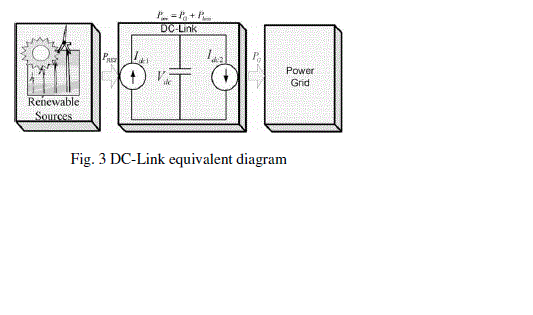 |
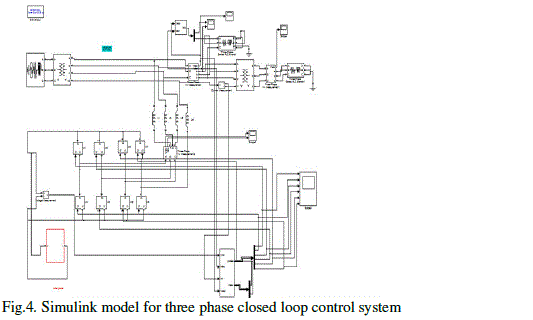 |
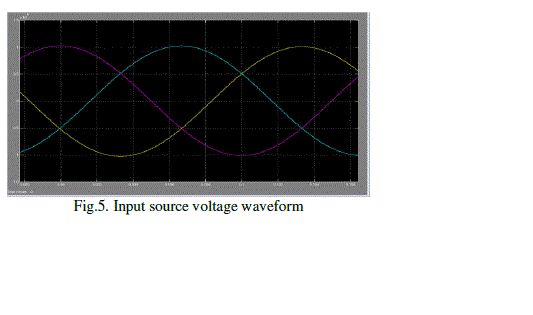 |
| Figure 1 |
Figure 2 |
Figure 3 |
Figure 4 |
Figure 5 |
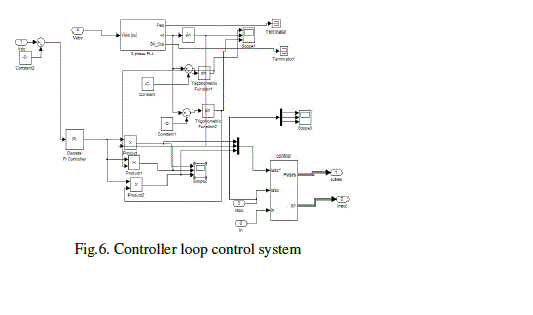 |
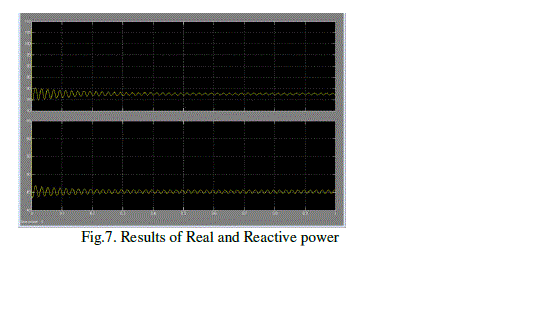 |
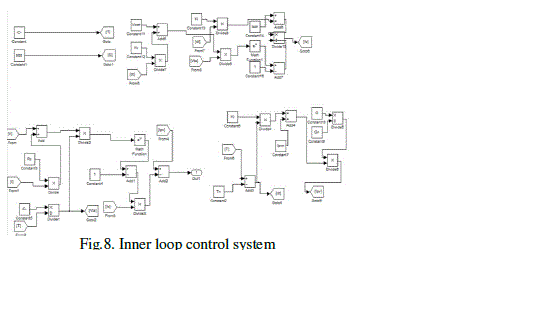 |
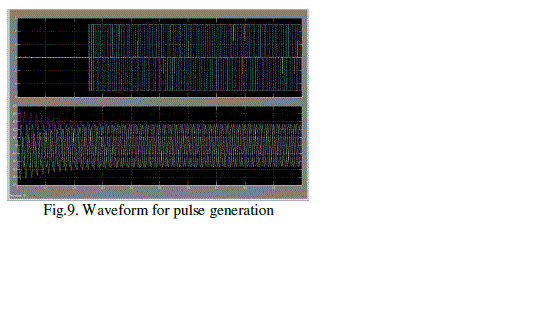 |
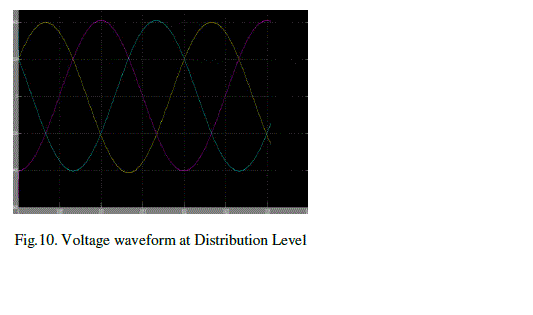 |
| Figure 6 |
Figure 7 |
Figure 8 |
Figure 9 |
Figure 10 |
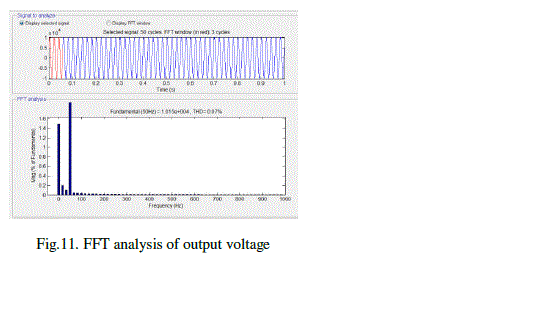 |
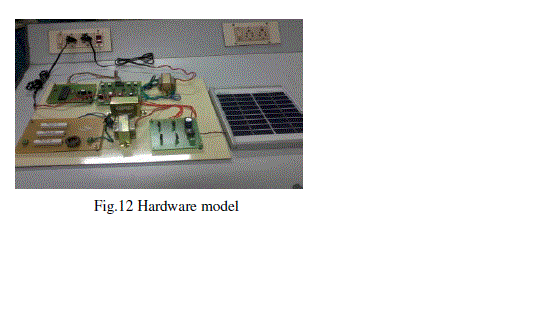 |
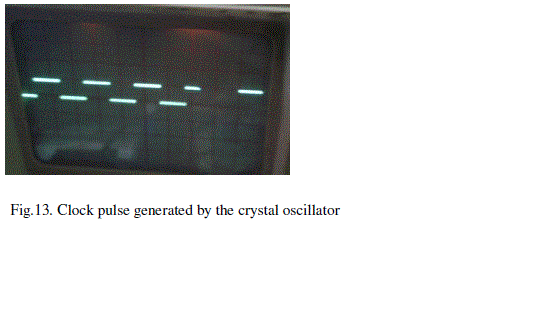 |
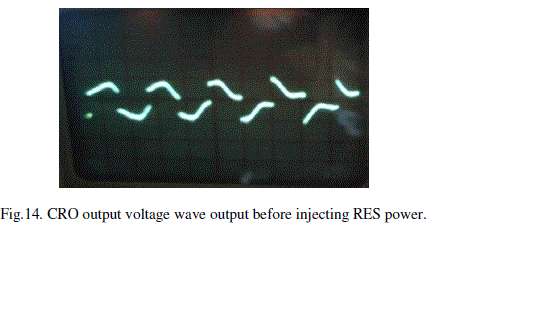 |
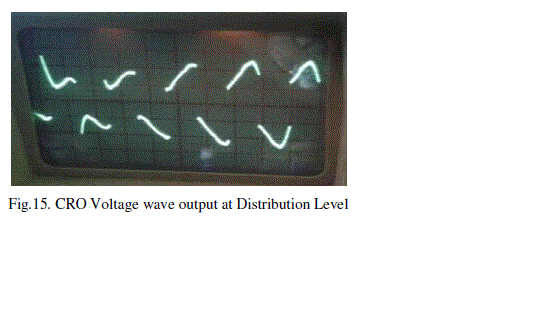 |
| Figure 11 |
Figure 12 |
Figure 13 |
Figure 14 |
Figure 15 |
|
References
|
- J. M. Guerrero, L. G. de Vicuna, J. Matas, M. Castilla, and J. Miret, “A wireless controller to enhance dynamic performance of parallel inverters in distributed generation systems,” IEEE Trans. Power Electron., vol. 19, no. 5, pp. 1205–1213, Sep. 2012.
- J. H. R. Enslin and P. J. M. Heskes, “Harmonic interaction between a large number of distributed power inverters and the distribution network,” IEEE Trans. Power Electron., vol. 19, no. 6, pp. 1586–1593, Nov. 2011.
- U. Borup, F. Blaabjerg, and P. N. Enjeti, “Sharing of nonlinear load in parallel-connected three-phase converters,” IEEE Trans. Ind. Appl., vol. 37, no. 6, pp. 1817–1823, Nov./Dec. 2010.
- J. P. Pinto, R. Pregitzer, L. F. C. Monteiro, and J. L. Afonso, “3-phase 4-wire shunt active power filter with renewable energy interface,” presented at the Conf. IEEE Rnewable Energy & Power Quality, Seville, Spain, 2012.
- J. M. Carrasco, L. G. Franquelo, J. T. Bialasiewicz, E. Galván, M.Á.M.Prats, J. I. León, and N. M. Alfonso, “Power electronic systems for the grid integration of renewable energy sources: A survey,” IEEE Trans. Ind. Electron., vol. 53, no. 4, pp. 1002–1016, Aug. 2010.
- P. Jintakosonwit, H. Fujita, H. Akagi, and S. Ogasawara, “Implementation and performance of cooperative control of shunt active filters for harmonic damping throughout a power distribution system,” IEEE Trans. Ind. Appl., vol. 39, no. 2, pp. 556–564, Mar./Apr. 2011.
- F. Blaabjerg, R. Teodorescu, M. Liserre, and A. V. Timbus, “Overview of control and grid synchronization for distributed power generation systems,” IEEE Trans. Ind. Electron., vol. 53, no. 5, pp. 1398–1409, Oct. 201
|